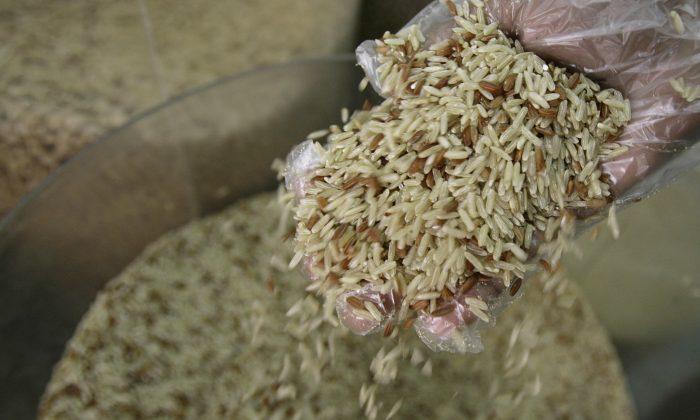ITATIBA, Brazil—The country that has been dubbed the “world’s breadbasket” is facing issues with high arsenic levels in the most common food of its people.
A recent study by Brazilian researchers has found high levels of arsenic in Brazilian rice. The research was motivated by similar studies finding high levels of arsenic in rice from other countries including China, Bangladesh, and the U.S.
Arsenic is a well-known carcinogen, and can cause alternations in the human body leading to vascular diseases, diabetes, and skin and bladder cancer, among others.
According to the researchers, the average level of arsenic found in Brazilian rice samples they examined was 222 nanograms per gram of rice.
Lead author of the study Bruno Lemos Batista from the University of São Paulo says this level is too high when compared to the maximum permitted amount of arsenic in water, capped at 10 micrograms per litre of water.
“In particular, coarse rice was found to have higher concentrations [of arsenic], since, in general, arsenic can build up in the bran,” Batista says.
Brazil currently has no established limit on the amount of arsenic allowed in rice, but does have regulations for the amount of arsenic in water.
One of the main reasons for the presence of arsenic is the use of pesticides polluting the soil and water, Batista says.
Calls for Regulations
With the rise of inorganic arsenic (most toxic form of arsenic compounds) in meat and grain products around the world, many are asking for more clear regulations on the amount of arsenic allowed in food.
The European Food and Safety Authority (EFSA) advises the daily arsenic intake be limited to between 0.3 and 8 micro grams per kilogram of body weight.
Last year, a group of U.S. congressmen introduced legislation to limit the amount of arsenic allowed in rice and rice products.
Batista says the Brazilian National Health Surveillance Agency has held public consultations to set a limit on the maximum allowed concentration of arsenic in rice, but to date no formal limits have been established in Brazil.
“The control is not done consistently, and we don’t have laws for that [limits on arsenic levels],” says Batista.
According to the Brazilian Agriculture Ministry and the National Agency of Sanitary Monitoring in Food Industry, arsenic is currently not among the toxic substances they monitor in food.
Batista says one of the reasons for lack of legislation is insufficient knowledge about arsenic and its presence in food products in Brazil.
“In Brazil, we have little information about the concentration of arsenic in different Brazilian products, including rice, for example, and different varieties of rice. In this sense, our research cannot cease,” Batista says.



